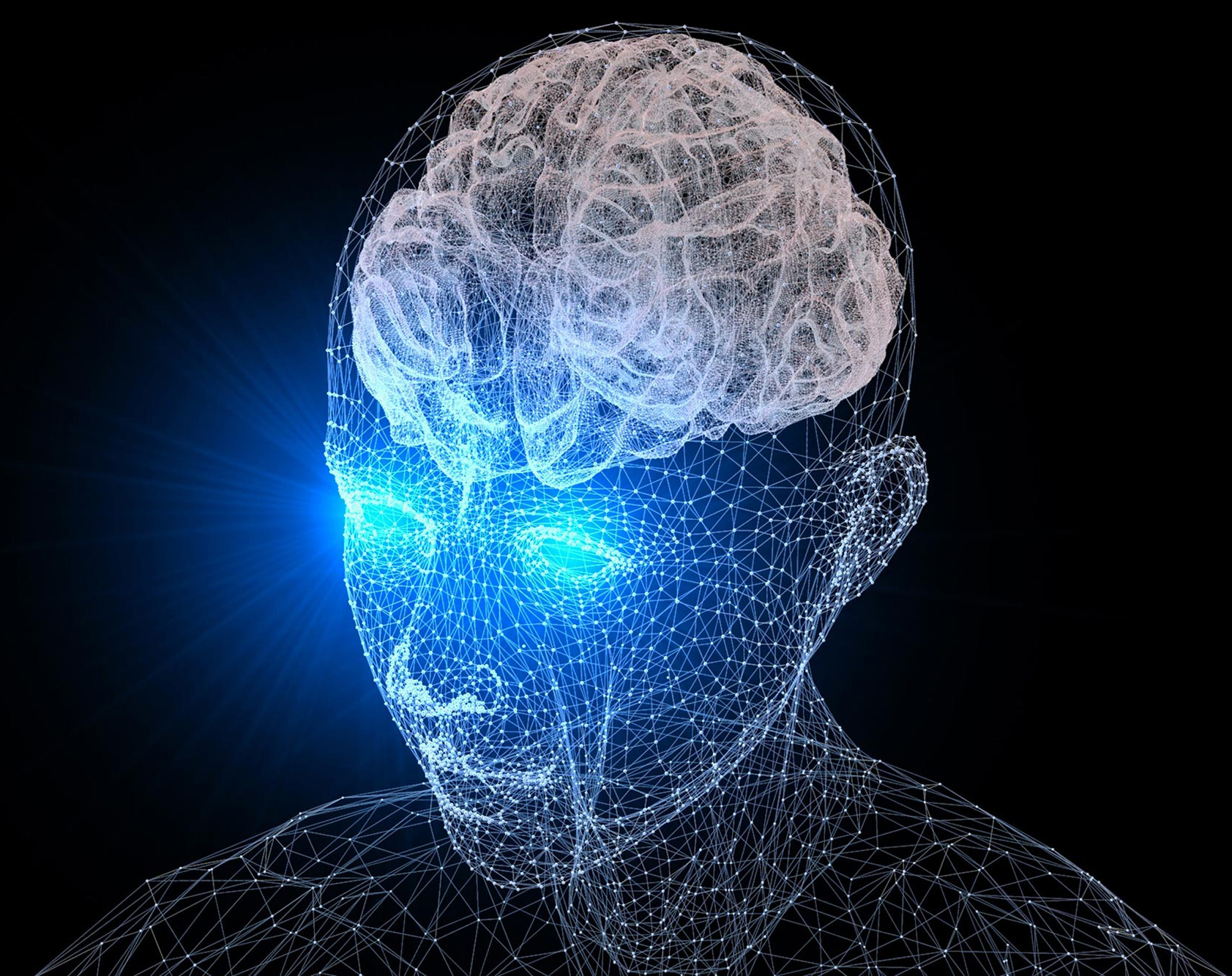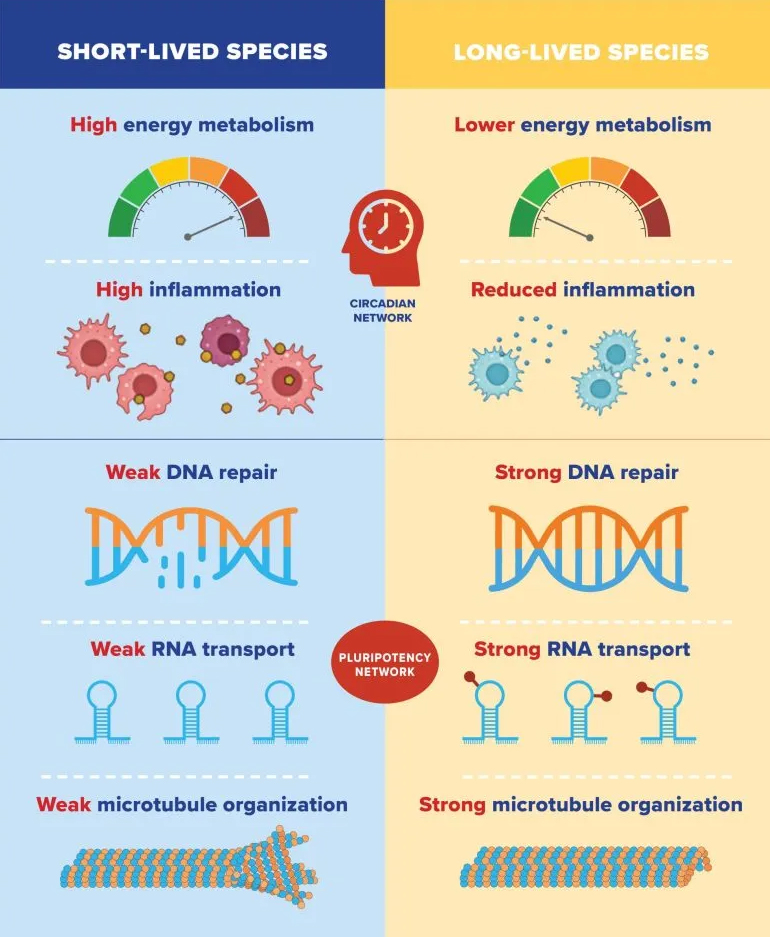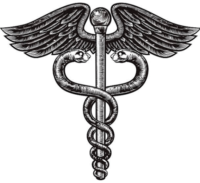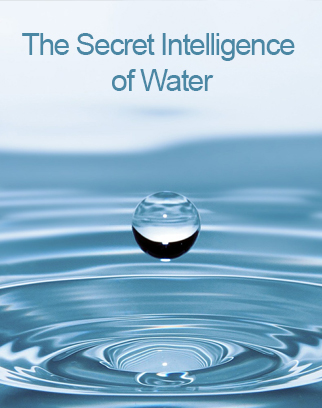
Health Science is your source for the latest health news and interesting research articles from leading universities, institutes, and alternative organizations. Learn more about the latest research into Medicine, Cancer, Diet, Stem Cells, Nutrition, Immunobiology, Reverse Aging, Psychiatry, Metabolism, and much more.
A New Technology Could Help Solve a DNA Mystery
The human genome’s inner workings could be revealed through new Cornell-developed technology.
Researchers from Oxford Nanopore Technologies, Weill Cornell Medicine, and the New York Genome Center have created a new technique to evaluate the three-dimensional structure of the human DNA, or how the genome folds, on a massive scale. The genome is the entire set of genetic instructions, either DNA or RNA, that allow an organism to function. Using this technique, the researchers showed that groups of simultaneously interacting regulatory elements in the genome, as opposed to pairs of these elements, may influence cell activity, including gene expression. Their research, which was recently published in the journal Nature Biotechnology, may help clarify the connection between cellular identity and genome structure.“Knowing the three-dimensional genome structure will help researchers better understand how the genome functions, and particularly how it encodes different cell identities,” said senior author Dr. Marcin Imieliński, associate professor of pathology and laboratory medicine and computational genomics in computational biomedicine at Weill Cornell Medicine and a core member of the New York Genome Center. “The ways that we’ve had to study genome structure have given us amazing insights, but there have also been key limitations,” he said.

Dr. Imieliski and his research team, which included first author Aditya Deshpande, a recent graduate of the Tri-Institutional Ph.D. Program in Computational Biology & Medicine who worked in Dr. Imieliski’s lab, created a new genome-wide assay and algorithm that allows them to study groups of loci rather than just pairs. They adapted Hi-C (chromatin conformation capture), a standard approach that evaluates a combination of DNA and protein to assess three-dimensional genome structure, to nanopore sequencing, or the high-throughput sequencing of long, continuous strands of DNA molecules. The new test, named Pore-C, allowed the researchers to examine tens of millions of three-dimensional locus clusters. They also developed statistical methods to determine which locus groupings were important, based on whether they interacted cooperatively to affect gene expression. “Many three-dimensional interactions of the genome are not important,” Dr. Imieliński said. “Our analytic methods help us prioritize the group interactions that are likely to matter for genome function.” As a key finding of the study, the researchers found that the most significant cooperative groupings of DNA elements occurred around genes associated with cell identity. Future experiments will explore which specific groupings of genomic components are essential for various aspects of cell identity. The new technology may also help researchers to understand how stem cells, the immature, master cells of the body, differentiate into different cell types. In addition, researchers may be better able to understand abnormalities in cancer cells. “In the future, this technology may be really helpful in understanding how cancer cell genomes are rearranged, and how those rearrangements drive the altered cell identities that enable cancers to grow and spread,” Dr. Imieliński said.
Reference: “Identifying synergistic high-order 3D chromatin conformations from genome-scale nanopore concatemer sequencing” by Aditya S. Deshpande, Netha Ulahannan, Matthew Pendleton, Xiaoguang Dai, Lynn Ly, Julie M. Behr, Stefan Schwenk, Will Liao, Michael A. Augello, Carly Tyer, Priyesh Rughani, Sarah Kudman, Huasong Tian, Hannah G. Otis, Emily Adney, David Wilkes, Juan Miguel Mosquera, Christopher E. Barbieri, Ari Melnick, David Stoddart, Daniel J. Turner, Sissel Juul, Eoghan Harrington and Marcin Imieliński, 30 May 2022, Nature Biotechnology.
Neuroscience
Clinical Psychiatrist Experiences “Noesis” After Anesthesia
He says he experienced a state of “noesis” while emerging from general anesthesia
A psychiatrist from the University of Warwick has attempted to unpack the scientific validity of mystical experiences by describing his own transcendental encounter while emerging from general anesthesia. Detailing the strange phenomenon in the Journal of Nervous and Mental Disease, Professor Swaran Singh explains how he came to “understand the cosmos, not in a cognitive sense of knowing but in an experiential manner, which is difficult to articulate.”
The event occurred almost 40 years ago on April 4, 1984, during postoperative recovery following a serious road accident. Since then, Professor Singh has dedicated himself to the study of objective science, yet insists that the experience “has become increasingly salient in my sense of self and my understanding of the relationship between the empirical and the transcendental.”
Describing the experience itself, he reveals that it was permeated with a “noetic quality,” which is defined as “a sense of revelation and complete understanding.” According to the author, the odd occurrence lasted for ten to 12 minutes, and allowed him to “know something completely and wholly, which I had never known before.”
“I do not know how I know, but I know that I know,” he writes, before going on to explain how he came to entirely understand the interplay between “space, time, energy, matter, and life.”
“Life changes from one form to another, but the total quantity of life force remains constant and fixed,” he says. “The increase of one form is at the expense of another, and in case of life, one life form appears at the expense of another disappearing.”

“I do not know how I know, but I know that I know,” he writes, before going on to explain how he came to entirely understand the interplay between “space, time, energy, matter, and life.”
“Life changes from one form to another, but the total quantity of life force remains constant and fixed,” he says. “The increase of one form is at the expense of another, and in case of life, one life form appears at the expense of another disappearing.”Attempting to ascertain the source and legitimacy of this unexpected download, Singh insists that “there must be a neural basis to these phenomena.” Delving deeper into the matter, he recounts how the activation of brain regions such as the insula, premotor cortex, and inferior parietal lobe have all been implicated in the generation of mystical experiences during meditation or while under the influence of psychedelic drugs.
He also notes that any such changes in his own brain activity were most likely provoked by “a toxic/drug-induced confusional state,” yet at the same time maintains that the knowledge gained during the experience was valid and authentic. He thus encapsulates the gulf between empirical science and the indefinable power of pure experience and argues that while neural activity undeniably determines our mental processes, certain levels of consciousness may be derived from something deeper than mere brain activity.
“Brain states are mechanisms. They do not confer meaning,” he writes. “And subjective meaning cannot be reduced to a brain state, regardless of the strength of the statistical association between the two.” – Ben Taub
Gene Regulation Might Be the Key to a Longer Lifespan
Researchers discovered that long-lived organisms often exhibit high expression of genes involved in DNA repair, RNA transport, and cellular skeleton organization and low expression of genes involved in inflammation and energy consumption.
Researchers from the University of Rochester who are interested in longevity genetics propose new targets to fight aging and age-related disorders.
Mammals that age at vastly different rates have been created through natural selection. Naked mole rats, for instance, may live up to 41 years, which is over 10 times longer than mice and other rodents of comparable size.What causes a longer lifespan? A crucial component of the puzzle, according to a recent study by biologists at the University of Rochester, is found in the mechanisms that control gene expression.Vera Gorbunova, the Doris Johns Cherry professor of biology and medicine, Andrei Seluanov, the first author of the publication, Jinlong Lu, a postdoctoral research fellow in Gorbunova’s lab, and other researchers looked into genes related to longevity in a recent paper published in Cell Metabolism.Their findings indicated that two regulatory mechanisms governing gene expression, known as the circadian and pluripotency networks, are crucial to longevity. The discoveries have significance for understanding how longevity arises as well as for providing new targets to fight aging and age-related disorders.
In comparing the gene expression patterns of 26 species with diverse lifespans, University of Rochester biologists found that the characteristics of the different genes were controlled by circadian or pluripotency networks. Credit: University of Rochester illustration / Julia Joshpe

Comparing longevity genes
With maximum lifespans ranging from two years (shrews) to 41 years (naked mole rats), the researchers analyzed the gene expression patterns of 26 mammalian species. They discovered thousands of genes that either correlated positively or negatively with longevity and were linked to a species’ maximum lifetime.They found that long-lived species tend to have low expression of genes involved in energy metabolism and inflammation; and high expression of genes involved in DNA repair, RNA transport, and organization of cellular skeleton (or microtubules). Previous research by Gorbunova and Seluanov has shown that features such as more efficient DNA repair and a weaker inflammatory response are characteristic of mammals with long lifespans. The opposite was true for short-lived species, which tended to have high expression of genes involved in energy metabolism and inflammation and low expression of genes involved in DNA repair, RNA transport, and microtubule organization.
Two pillars of longevity
When the researchers analyzed the mechanisms that regulate the expression of these genes, they found two major systems at play. The negative lifespan genes—those involved in energy metabolism and inflammation—are controlled by circadian networks. That is, their expression is limited to a particular time of day, which may help limit the overall expression of the genes in long-lived species. This means we can exercise at least some control over the negative lifespan genes. “To live longer, we have to maintain healthy sleep schedules and avoid exposure to light at night as it may increase the expression of the negative lifespan genes,” Gorbunova says.

Why Do Humans Sleep? Scientists Find Clues for Solving This Age-Old Mystery
New insights into brain activity when sleeping may help in the creation of tools for those suffering from neurologic disease or damage
Why do humans sleep? This issue has been debated by scientists for hundreds of years, but a recent study from Massachusetts General Hospital (MGH) researchers that was carried out in collaboration with experts from Brown University, the Department of Veterans Affairs, and several other institutions adds new clues for solving this mystery. Their research, which was recently published in the Journal of Neuroscience, may help to explain how individuals remember things and pick up new skills. It may also help with the creation of assistive tools for those with neurological conditions or injuries.
According to the lead author of the research and neurologist Daniel Rubin, MD, Ph.D., of the MGH Center for Neurotechnology and Neurorecovery, scientists have long known that during sleep, a phenomenon known as “replay” takes place. Replay is thought to be a mechanism used by the brain to recall new information. When a mouse is taught to navigate a labyrinth, monitoring equipment may indicate that a precise pattern of brain cells, or neurons, light up as it follows the proper path. “Then, later on, while the animal is sleeping, you can see that those neurons will fire again in that same order,” says Rubin. Scientists theorize that this is how the brain practices newly acquired knowledge during sleep, allowing memories to be consolidated—that is, turned from short-term memories to long-term memories.Replay, however, has only been properly shown in lab animals. “There’s been an open question in the neuroscience community: To what extent is this model for how we learn things true in humans? And is it true for different kinds of learning?” asks neurologist Sydney S. Cash, MD, Ph.D., co-director of the Center for Neurotechnology and Neurorecovery at MGH and co-senior author of the study. Importantly, says Cash, understanding whether replay occurs with the learning of motor skills could help guide the development of new therapies and tools for people with neurologic diseases and injuries. To study whether replay occurs in the human motor cortex—the brain region that governs movement—Rubin, Cash, and their colleagues enlisted a 36-year-old man with tetraplegia (also called quadriplegia), meaning he is unable to move his upper and lower limbs, in his case due to a spinal cord injury. The man, identified in the study as T11, is a participant in a clinical trial of a brain-computer interface device that allows him to use a computer cursor and keyboard on a screen. The investigational device is being developed by the BrainGate consortium, a collaborative effort involving clinicians, neuroscientists, and engineers at several institutions with the goal of creating technologies to restore communication, mobility, and independence for people with neurologic disease, injury, or limb loss. The consortium is directed by Leigh R. Hochberg, MD, Ph.D., of MGH, Brown University, and the Department of Veterans Affairs.
In the study, T11 was asked to perform a memory task similar to the electronic game Simon, in which a player observes a pattern of flashing colored lights, then has to recall and reproduce that sequence. He controlled the cursor on the computer screen simply by thinking about the movement of his own hand. Sensors implanted in T11’s motor cortex measured patterns of neuronal firing, which reflected his intended hand movement, allowing him to move the cursor around on the screen and click it at his desired locations. These brain signals were recorded and wirelessly transmitted to a computer.
That night, while T11 slept at home, activity in his motor cortex was recorded and wirelessly transmitted to a computer. “What we found was pretty incredible,” says Rubin. “He was basically playing the game overnight in his sleep.” On several occasions, says Rubin, T11’s patterns of neuronal firing during sleep exactly matched patterns that occurred while he performed the memory-matching game earlier that day. “This is the most direct evidence of replay from the motor cortex that’s ever been seen during sleep in humans,” says Rubin. Most of the replay detected in the study occurred during slow-wave sleep, a phase of deep slumber. Interestingly, replay was much less likely to be detected while T11 was in REM sleep, the phase most commonly associated with dreaming. Rubin and Cash see this work as a foundation for learning more about replay and its role in learning and memory in humans. “Our hope is that we can leverage this information to help build better brain-computer interfaces and come up with paradigms that help people learn more quickly and efficiently in order to regain control after an injury,” says Cash, noting the significance of moving this line of inquiry from animals to human subjects. “This kind of research benefits enormously from the close interaction we have with our participants,” he adds, with gratitude to T11 and other participants in the BrainGate clinical trial.
Hochberg concurs. “Our incredible BrainGate participants provide not only helpful feedback toward the creation of a system to restore communication and mobility, but they also give us the rare opportunity to advance fundamental human neuroscience—to understand how the human brain works at the level of circuits of individual neurons,” he says, “and to use that information to build next-generation restorative neurotechnologies.” Rubin is also an instructor in neurology at Harvard Medical School (HMS). Cash is an associate professor of Neurology at HMS. Hochberg is a senior lecturer on Neurology at HMS and a professor of Engineering at Brown University. The study was funded by the National Institute of Neurologic Disease and Stroke, the American Academy of Neurology, the National Institute of Mental Health, Conquer Paralysis Now, the Department of Veterans Affairs, the MGH-Deane Institute, and the Howard Hughes Medical Institute at Stanford University.
Top 10 Benefits Of Taking Multivitamin Capsules
The concept of vitamin supplements is not new for us, but this COVID-19 pandemic brings them into the limelight. They may help us to increase our natural immunity and fight against coronavirus.Vitamins are the main building blocks of the body and help you maintain good health. Some believe that multivitamin supplements can also compensate for poor eating habits and even reduce your risk of chronic diseases.We try to eat right, exercise more, and sleep better, but somehow we lack essential nutrients. We strive for a balance to increase wellness to deal with the stress, poor sleep, and dietary deficiencies that come from our body from a busy life.To fill our nutrient gaps, most of us have looked to the once-a-day multivitamin for help.
What are multivitamins?
Multivitamins are a combination of different vitamins and minerals present in food sources. Consumption of multivitamins daily can help us to make up for nutritional gaps to boost our health naturally. Multivitamins are an instant way to fulfil our everyday demands of nutrition and to get our daily servings of all our vitamins and minerals.
Are multivitamins all we need?
If the diet is well-balanced, we might not need a daily multivitamin or specific vitamin pills. But there are situations where we do. For example, women of childbearing age should take a folic acid pill every day. Taking multiple vitamins personalised for your needs is better than taking one multivitamin, but finding a specific supplement and vitamin routine can be difficult and time-consuming. Sometimes, it’s better to take a single capsule of a multivitamin than taking multiple pills of different vitamins.
What multivitamins contain?
As the name suggests, it contains various vitamins along with minerals. The human body required thirteen vitamins and sixteen minerals for healthy growth. Multivitamin supplements may also contain other ingredients like herbs, amino acids, and fatty acids.
Health Benefits of Multivitamin
Increases Energy Levels
When our body doesn’t meet the nutritional criteria, we may feel weak and lethargic. A regular course of multivitamin capsules as per your doctor’s advice can help you regain your energy. Taking multivitamins and keeping a healthy lifestyle can keep you energetic and fit.
Boosts the Immune System
The multivitamin capsule contains vitamin C, vitamin E, and vitamin D-know for strengthening the immune system. Vitamin C and vitamin E are antioxidants that help to reduce allergy symptoms.
Keeps Heart Healthy
The heart is a vital organ of the body and keeping it healthy is necessary. Various studies suggest that taking high-quality multivitamins may reduce cardiovascular diseases. Vitamins B1, B2, B6, K1, Niacin, and magnesium all play a role in cardiovascular health.
Supports Eye Health
Vitamin A is also known as an eye vitamin because of its benefits. It helps to improve your eyesight and reduce age-related macular degeneration that may cause permanent eye damage. One study suggests vitamins, minerals, and antioxidants may slow down the progression of macular degeneration.
Maintains Muscle Strength
Free radicals in the body are dangerous as they are mainly responsible for muscle ageing-related problems. These free radicals can be destroyed by antioxidants, which are present in multivitamin capsules. Taking multivitamins can help keep these damaging free radicals in check.
Reduces Cancer Risk
Many results suggested that taking a multivitamin daily can reduce the risk of getting all types of cancer. As per your doctor’s advice, you can take multivitamins accordingly.
Improves Brain Function
Some vitamins and fatty acids are slow or prevent memory loss. Vitamins like vitamin B12, herbal supplements such as Ginkgo Biloba, and omega-3 fatty acids help restore brain function.
Reduces Stress & Depression
The vitamins and minerals in your multivitamin capsule can significantly reduce stress and depression symptoms. Vitamin B stimulates your nervous system to produce stress hormones to reduce stress. Acquiring enough vitamins and minerals improves the brain functions responsible for your mood.
Beneficial for Skin
Vitamins and minerals are always best for skin health. They help keep your skin healthy and shiny by providing essential vitamins such as vitamin E and vitamin C. They help to retain the natural oil inside your skin to prevent dryness of the skin. Antioxidants present in it also play an important role.
Good for Healthy Hair
Hair requires the most care, especially in winters. Vitamin B, vitamin C, vitamin E, and some minerals are essential for the healthy growth of hair. They work excellently in hair fall problems.
Conclusion
Though our body doesn’t require multivitamin supplementation as we can get them from our regular diet. Before taking multivitamin tablets, always consult your doctor. Only as per requirement you can take those capsules.

Scientists Discover How You Can Improve Your Metabolism
Researchers find how skeletal muscle adjusts to high-intensity interval training, including alterations to mechanisms crucial for controlling metabolism and muscular contraction.
Research recently published in eLife has provided fresh insight into the effects of high-intensity interval training (HIIT) on human skeletal muscle. According to the study, HIIT increases the number of skeletal muscle proteins crucial for energy metabolism and muscular contraction and chemically alters important metabolic proteins. These findings may help to explain how HIIT boosts metabolism and open the door to further research on the influence of exercise on these processes.
“Exercising has many beneficial effects that can help prevent and treat metabolic diseases, and this is likely the result of changes in energy use by skeletal muscles. We wanted to understand how exercise alters the muscles’ protein content and how it regulates the activity of these proteins through a chemical reaction called acetylation,” says first and co-corresponding author Morten Hostrup, Associate Professor at the Department of Nutrition, Exercise, and Sports at the University of Copenhagen, Denmark. Acetylation occurs when a member of the small molecule group, acetyl, combines with other molecules and can affect the behavior of proteins. The scientists enlisted eight healthy, untrained male volunteers for their study, who underwent five weeks of intense cycling training. The guys exercised three times each week, cycling for four minutes at a target heart rate of more than 90% of their maximum, followed by a two-minute break. Each session, they went through this process four to five times.
The scientists examined changes in the makeup of 3,168 proteins in tissue samples taken from the participants’ thighs both before and after the study using a method called mass spectrometry. Additionally, they looked at changes involving 1,263 lysine acetyl-sites on 464 acetylated proteins. Their analyses showed an increase in the production of proteins used to build mitochondria, which produce energy in cells, and in proteins related to muscle contractions. The team also identified increased acetylation of mitochondrial proteins and enzymes that are involved in the production of cellular energy. Additionally, they observed changes in the number of proteins that reduce the skeletal muscle’s calcium sensitivity, which is essential for muscle contractions. The results confirm some well-known changes to skeletal muscle proteins that occur after exercise, as well as identify new ones. For example, the reduced calcium sensitivity may explain why it can be harder for muscle contraction to occur after an athlete becomes fatigued. The work also suggests that exercise-induced changes in the regulation of proteins through acetylation may contribute to boosting metabolism. “Using state-of-the-art proteomics technology, our study provides new information about how skeletal muscle adapts to exercise training, including the identification of novel exercise-regulated proteins and acetyl-sites,” concludes co-corresponding author Atul Deshmukh, Associate Professor at the Novo Nordisk Foundation Center for Basic Metabolic Research, University of Copenhagen. “We hope our work will stimulate further research into how exercise helps improve metabolic health in humans.”

Shocking New Study Finds That 43.5% of Rivers Worldwide Have an Alarming Amount of Pharmaceutical Pollution
How pharmaceutical ingredients are affecting the world’s rivers
Pharmaceutical chemicals in prescription and over-the-counter medications are released into the environment during their manufacturing, usage, and disposal, particularly in surface waters. According to research findings recently published in Environmental Toxicology and Chemistry, pharmaceutical pollution is a worldwide issue that is likely harming the health of the world’s rivers.
Concerning quantities of pharmaceutical components were found in about 43.5% of the 1,052 sites across 104 nations that were evaluated for the research. 23 pharmacological ingredients—including compounds from the antidepressant, antimicrobial, antihistamine, benzodiazepine, painkiller, and other classes—occurred at concentrations above what is considered safe. “This is the first truly global assessment of the impacts of single pharmaceuticals and mixtures of pharmaceuticals in riverine systems,” said corresponding author Alejandra Bouzas-Monroy, a Ph.D. student at the University of York. “Our findings show that a very high proportion of rivers around the world are at threat from pharmaceutical pollution. We should therefore be doing much more to reduce the emissions of these substances into the environment.” Reference: “Assessment of the Potential Ecotoxicological Effects of Pharmaceuticals in the World’s Rivers” by Alejandra Bouzas-Monroy, John L. Wilkinson, Molly Melling and Alistair B. A. Boxall, 22 June 2022, Environmental Toxicology and Chemistry


